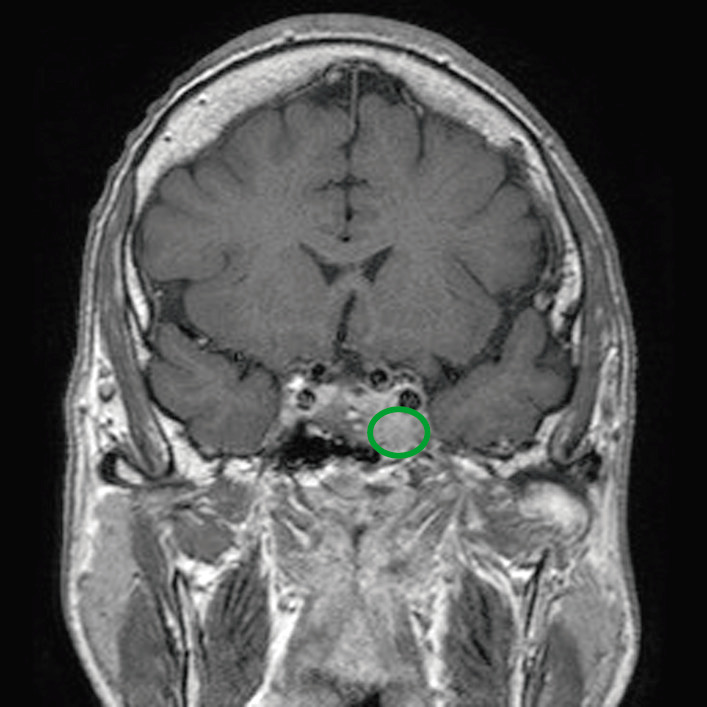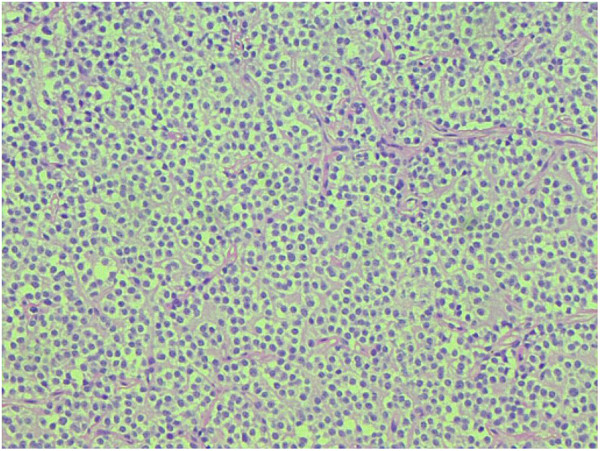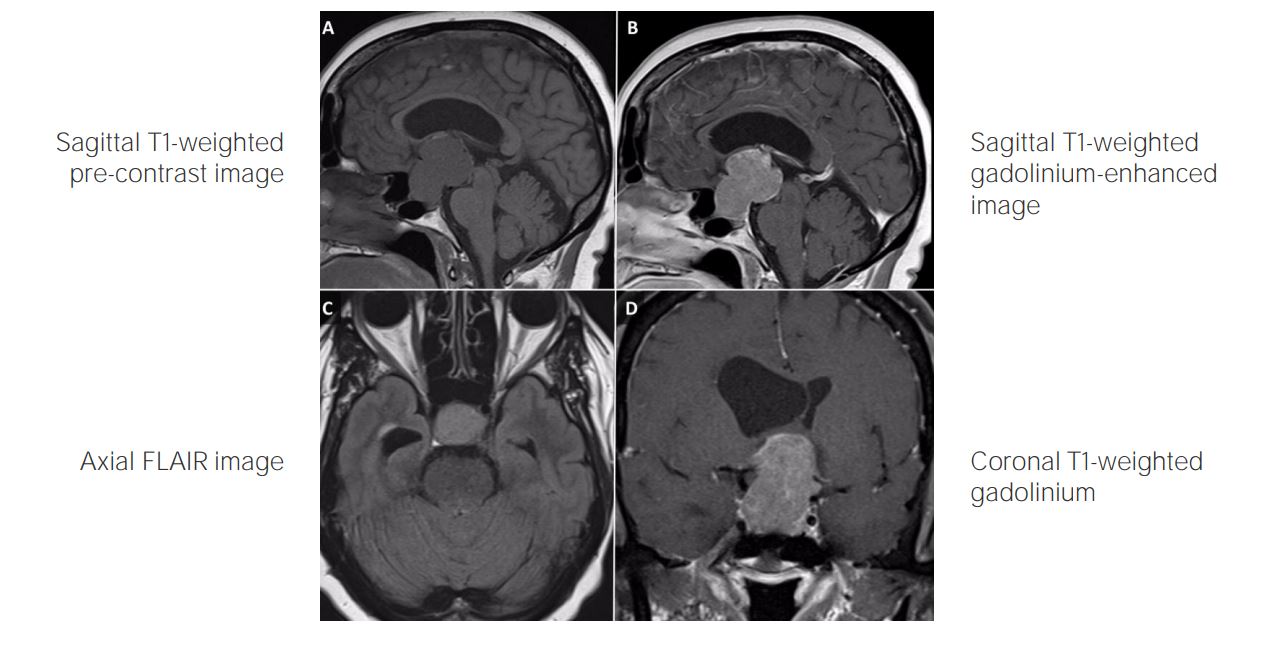Playlist
Show Playlist
Hide Playlist
Pituitary Tumors: Clinical Presentation
-
Strowd CNS Tumors Pituitary Adenoma.pdf
-
Download Lecture Overview
00:00 How do patients present with pituitary tumors? What's highly variable and depends on whether the tumor is secreting hormone or not? This is a nice table that walks us through some of the different presentations clinical symptoms and signs that we see for patients with pituitary tumors. 00:18 We should think about presentation of non-functioning pituitary tumors because that makes up a third of these pituitary lesions. 00:24 And the thing we think about are headaches from compression of the surrounding dura bitemporal hemianopia. 00:31 The optic apparatus and the optic nerves cross, the optic information crosses at the optic chiasm, the optic chiasm sits just above the pituitary gland. 00:40 And so pituitary tumors that grow upwards, compress the optic chiasm and result in a bitemporal hemianopia. 00:47 We can also see other types of diplopia from invasion into the cavernous sinus and hydrocephalus. 00:54 What about the hormone secreting tumors? Well, prolactinomas are the most common, and those prolactin secreting pituitary tumors can present with oligomenorrhea, reduced menses, amenorrhea or absence of menses, galactorrhea, or impotence. 01:09 Important things that we need to ask about for these patients. 01:13 We can see acromegaly or gigantism. 01:16 These are tumors that are secreting growth hormone and everything is larger, enlarged hands and feet, increased soft tissue edema. 01:24 frontal bossing, coarse features, acral growth. 01:27 We can even see diabetes, and hypertension, and cardiac problems for these patients. 01:32 Growth hormone–secreting pituitary tumors are extremely important to recognize and treat because some of these symptoms could lead to early death if not recognized and intervened upon. 01:44 We can see Cushing's disease and this is for tumors that are secreting ACTH, or Adrenocorticotropic hormone. 01:52 The types of symptoms we see with Cushing's disease are weight gain, and hypertension, diabetes, and hypokalemia, thinning of the bones, your osteoporosis, abdominal striae, and moon facies, which are cutaneous findings that we can see in patients as a result of weight gain. 02:10 Supraclavicular fat pads, renal disease, cardiac disease and again there is a risk of early death if not recognized and treated. 02:20 Thyroid-stimulating hormone secreting tumors cause excess TSH and we can see increased thyroid related symptoms. 02:29 We see weight loss, tachycardia, palpitations, and hypertension. 02:33 All symptoms from excess thyroid-stimulating hormone revving up those cells, and causing the body to do more. 02:40 We see intolerance to heat, tremor, loss of libido, nausea, vomiting, and diarrhea. 02:46 And those are symptoms we see from tumors that secrete excess TSH. 02:51 How about tumors that secrete gonadotropin-secreting hormone? We can see ovarian hyperstimulation in women, and testicular hypertrophy in men, again signs that we would not know to recognize unless we're looking for in the appropriate clinical setting. 03:05 And then finally, the other tumor we can see in this area is the craniopharyngioma, which typically will present with some combination of headache, fatigue, dysmenorrhea, from local compression of the pituitary gland, bitemporal hemianopia from compression upwards growth upwards against the optic chiasm. 03:22 Diplopia, cognitive dysfunction, personality changes, can also be seen often from obstruction of CSF flow, as well as hydrocephalus on imaging.
About the Lecture
The lecture Pituitary Tumors: Clinical Presentation by Roy Strowd, MD is from the course CNS Tumors.
Included Quiz Questions
What is a sign or symptom of acromegaly?
- Cardiac hypertrophy
- Abdominal striae
- Hydrocephalus
- Impotence
- Moon facies
Which of the following is a symptom of craniopharyngioma?
- Bitemporal hemianopia
- Ovarian hyperstimulation in women
- Diabetes mellitus
- Frontal bossing
- Sleep apnea
Customer reviews
5,0 of 5 stars
| 5 Stars |
|
5 |
| 4 Stars |
|
0 |
| 3 Stars |
|
0 |
| 2 Stars |
|
0 |
| 1 Star |
|
0 |






